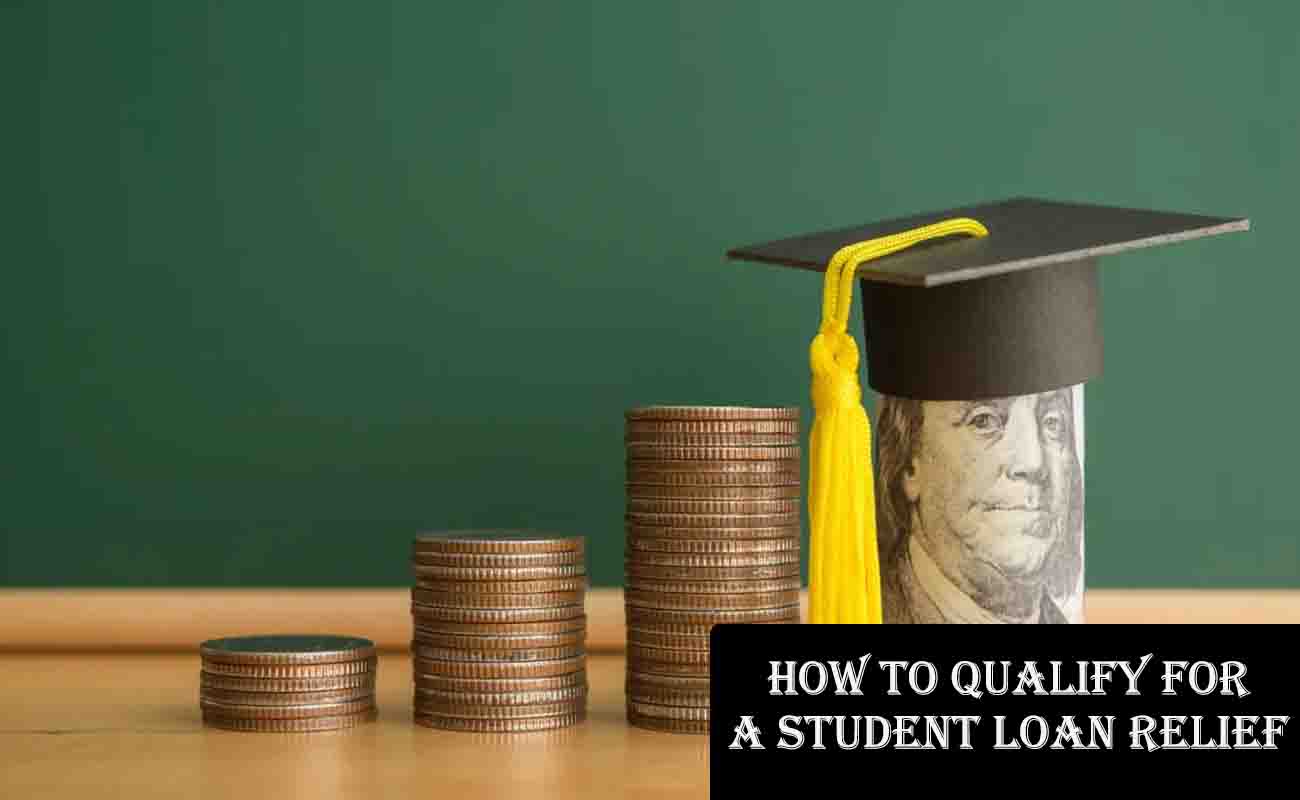This post will share details about How to Qualify for a Student Loan Relief. Student loan relief refers to programs and initiatives designed to help you manage or reduce your student loan debt. These can include forgiveness, where your remaining loan balance is canceled, income-driven repayment plans that adjust payments based on your income, or options like deferment and forbearance that temporarily pause payments.

As someone who understands the stress of student loans, I know how overwhelming it can feel to navigate these options. My goal is to break it down for you in simple terms so you can take control of your financial future. Why does student loan relief matter?
For many of us, student loan debt can feel like a heavy burden, making it hard to save for a home, start a family, or simply live without constant financial worry.
Relief programs are designed to make repayment more manageable and, in some cases, offer a path to eliminate your debt. By exploring these options, you can find a solution that fits your life and helps you move forward.
Types of Student Loan Relief
Understanding the types of student loan relief available is the first step to finding the right program for you. Most relief options apply to federal student loans, but there are a few key programs to know about:
- Public Service Loan Forgiveness (PSLF)
This program forgives the remaining balance of your federal Direct Loans after you make 120 qualifying payments (about 10 years) while working full-time for a qualifying employer, such as a government agency or certain non-profit organizations. To qualify, you need federal Direct Loans, but other federal loans can be consolidated into a Direct Loan to become eligible. You can use the PSLF Help Tool to track your progress. - Income-Driven Repayment (IDR) Forgiveness
IDR plans adjust your monthly payments based on your income and family size, and any remaining balance is forgiven after 20 or 25 years, depending on the plan. There’s also a one-time adjustment that counts certain periods of deferment or forbearance toward forgiveness, which can speed up the process for some borrowers. - Other Forgiveness Programs
Programs like Teacher Loan Forgiveness offer up to $17,500 in forgiveness for teachers who work in low-income schools for five consecutive years. There are also discharge programs for specific situations, like total and permanent disability or if your school closed while you were enrolled.
How to Qualify for Student Loan Relief
Have You ever wondered how do I qualify for student loan relief? Qualifying for student loan relief depends on the program, but here are the general steps to determine if you’re eligible:
- Check Your Loan Type
Most relief programs are for federal student loans only. Log in to StudentAid.gov to confirm your loan type. Private loans rarely qualify for forgiveness, except in cases like death or permanent disability. - Research Available Programs
Look into programs based on your job or financial situation. For example, if you work in public service, PSLF might be a good fit. If your income is low, an IDR plan could make payments more affordable. - Meet Program-Specific Requirements
- For PSLF: You must work full-time for a qualifying employer (government or non-profit) and make 120 qualifying payments under an eligible repayment plan, typically an IDR plan.
- For IDR Forgiveness: Enroll in an IDR plan and make payments for 20 or 25 years. The one-time IDR adjustment may count past periods of repayment or deferment toward this timeline.
- For Other Programs: Requirements vary. For example, Teacher Loan Forgiveness requires teaching in a low-income school for five years.
- Consolidate Loans if Needed
Some programs, like PSLF, require Direct Loans. If you have FFEL or Perkins Loans, you may need to consolidate them into a Direct Consolidation Loan by applying at StudentAid.gov.
Steps to Apply for Student Loan Relief
There are just a few steps on how to apply for this. Applying for student loan relief is straightforward once you know your options. Here’s how to get started:
- Identify Your Loan Type
Log in to StudentAid.gov to check if you have federal Direct Loans, FFEL, Perkins, or private loans. This will determine which programs you can apply for. - Find the Right Program
Use resources like the Federal Student Aid website to explore programs based on your job, income, or circumstances. The Loan Simulator can help you compare repayment plans. - Gather Documentation
- For PSLF, submit the Employment Certification for Public Service Loan Forgiveness form to certify your employment.
- For IDR plans, provide income information, such as tax returns or pay stubs.
- Other programs may require specific forms, like the Teacher Loan Forgiveness Application.
- Apply Online
- Apply for IDR plans at StudentAid.gov/idr.
- Use the PSLF Help Tool for PSLF applications.
- For other programs, follow the instructions on the Federal Student Aid forgiveness page.
- Stay on Top of Deadlines
Some programs, like the IDR one-time adjustment, have deadlines for consolidating loans (e.g., June 30, 2024, for some benefits). Check your application status and respond to any requests from your loan servicer.
Frequently Asked Questions (FAQs)
Here are answers to some common questions about student loan relief:
- Can I get student loan relief if I’m in default?
Yes, but you’ll likely need to get out of default first. Options include loan rehabilitation or consolidating into a Direct Consolidation Loan. Once out of default, you can apply for programs like PSLF or IDR forgiveness. The Fresh Start program can help you regain eligibility for relief. - How long does student loan forgiveness take?
It depends on the program. PSLF requires 10 years of qualifying payments. IDR forgiveness takes 20 or 25 years, though the one-time adjustment may shorten this for some borrowers. Teacher Loan Forgiveness requires five years of teaching in a qualifying school. - What if I don’t qualify for any relief programs?
If you don’t qualify for forgiveness, you can still explore IDR plans to lower your monthly payments based on your income. Contact your loan servicer for personalized options.
Conclusion
Student loan relief can be a game-changer, helping you manage or even eliminate your student loan debt. By understanding the programs available, checking your eligibility, and following the application steps, you can take charge of your financial future.
I know the process can feel complex, but you don’t have to navigate it alone—resources like StudentAid.gov and your loan servicer are there to help. Stay proactive, keep track of deadlines, and reach out for guidance if you need it.
Key Citations
- Federal Student Aid – Student Loan Forgiveness Options
- Consumer Financial Protection Bureau – Student Loan Forgiveness Guide
- Federal Student Aid – Public Service Loan Forgiveness Tool
- Federal Student Aid – Income-Driven Repayment Plans
- Federal Student Aid – Loan Consolidation Application
- Federal Student Aid – Teacher Loan Forgiveness Program
- Federal Student Aid – Getting Out of Default
